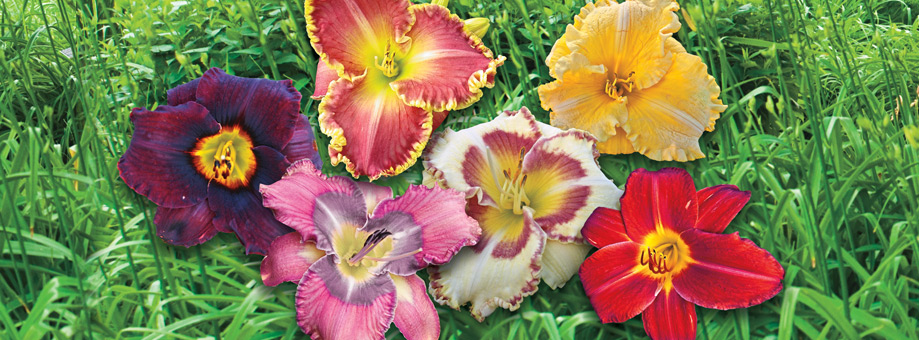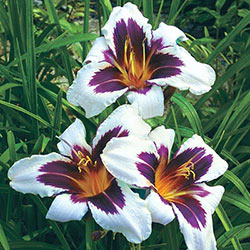- New
Check Out Our New VarietiesX
-
Fall-Planted Bulbs
Fall Planting for Spring Blooms X
-
Spring-Planted Bulbs
Spring Planting for Summer Blooms X
-
Sun Perennials
Create Brilliant Borders with Sun-Loving Plants X
-
Shade Perennials
Brighten Up Shady Spots with Much Needed ColourX
- Super Sak®
- Garden Essentials
The dainty daylilies
have been delighting gardeners with their abundant charm and agreeability
for centuries. Daylily comes from the genus Hemerocallis in the
Asphodelaceae family. Its botanical name translates to "beauty for a day",
an obvious allusion to the day-long lifespan of daylily flowers, most of
which tend to wither away within about 24 hours of blooming, often replaced
by another from the same stalk the following day. Daylilies
are native to parts of eastern Asia, including China, Japan and Korea.
Daylily flowers come in a wide array of forms and sizes and a breathtaking
spectrum of colors that includes orange, pink, purple, red and yellow.
Daylily plants do best in sites that receive direct sunlight for six hours a day. Incorporate good quantities of organic matter to enhance the soil's aeration, drainage and fertility. Daylilies are exceptional in their diversity and the myriad it can be utilized in the garden. They make stunning border plants, are excellent for mass plantings along walkways or fences as well as for landscape plantings in combination with compact shrubs or ornamental grasses.
Spring offers the ideal time for planting daylilies, although gardeners in the South also have the option of planting late in fall. Till the soil to a depth of 30 cm and dig planting holes that are a little larger than the root mass, at least 18 to 45-60 cm apart from each other. Make sure you spread the roots out as you sow, and that the crown doesn't end up any deeper than 2-3 cm under the soil surface. Pat the ground lightly to firm up the surface after refill and water thoroughly. Daylilies require regular irrigation for optimum growth. Mulching isn't a necessity, but is useful in areas susceptible to weeds and excessive heat.
Daylily plants do best in sites that receive direct sunlight for six hours a day. Incorporate good quantities of organic matter to enhance the soil's aeration, drainage and fertility. Daylilies are exceptional in their diversity and the myriad it can be utilized in the garden. They make stunning border plants, are excellent for mass plantings along walkways or fences as well as for landscape plantings in combination with compact shrubs or ornamental grasses.
Spring offers the ideal time for planting daylilies, although gardeners in the South also have the option of planting late in fall. Till the soil to a depth of 30 cm and dig planting holes that are a little larger than the root mass, at least 18 to 45-60 cm apart from each other. Make sure you spread the roots out as you sow, and that the crown doesn't end up any deeper than 2-3 cm under the soil surface. Pat the ground lightly to firm up the surface after refill and water thoroughly. Daylilies require regular irrigation for optimum growth. Mulching isn't a necessity, but is useful in areas susceptible to weeds and excessive heat.
You May Also Like...
Have another question? Return to the Customer Service Help page or send an e-mail directly to Customer Service.





 Tips and
Growing Intructions:
Tips and
Growing Intructions: 




